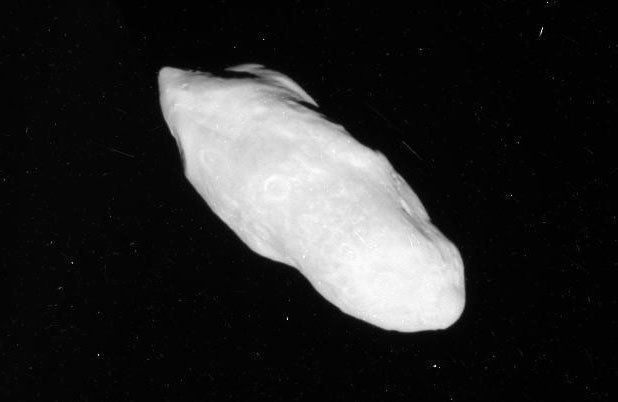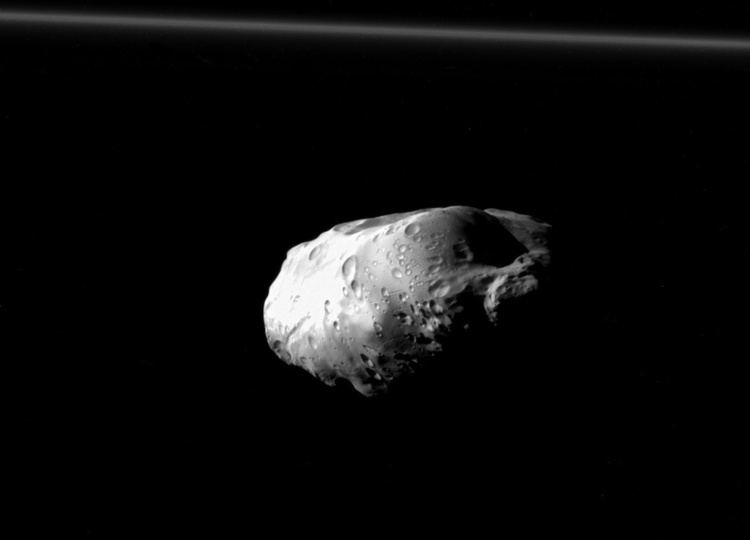Orbital period 15 hours | Discovery date October, 1980 Dimensions 135.6 × 79.4 × 59.4 km Discovered October 1980 Eccentricity 0.0022 | |
 | ||
Semi-major axis 7008139380000000000♠139380±10 km Inclination 6996139626340159546♠0.008°±0.004° to Saturn's equator Saturn moons | ||
Prometheus is an inner satellite of Saturn. It was discovered in 1980 (some time before October 25) from photos taken by the Voyager 1 probe, and was provisionally designated S/1980 S 27.

In late 1985 it was officially named after Prometheus, a Titan in Greek mythology. It is also designated Saturn XVI (16). Pronunciation for Prometheus is /prəˈmiːθiəs/, prə-MEE-thee-əs; Greek: Προμηθεύς.

Prometheus is extremely elongated, measuring approximately 136 km × 79 km × 59 km (85 mi × 49 mi × 37 mi). It has several ridges and valleys and a number of impact craters of about 20 km (12 mi) diameter are visible, but it is less cratered than nearby Pandora, Epimetheus, and Janus. From its very low density and relatively high albedo, it is likely that Prometheus is a very porous icy body. There is a lot of uncertainty in these values, however, and so this remains to be confirmed.

Interactions with F Ring and other moons
Prometheus is a shepherd satellite for the inner edge of Saturn's narrow F Ring. Pandora orbits just outside the F Ring, and has traditionally been viewed as an outer shepherd of the ring; however, recent studies indicate that only Prometheus contributes to the confinement of the ring.
Images from the Cassini probe show that the Promethean gravitational field creates kinks and knots in the F Ring as it 'steals' material from it. The orbit of Prometheus appears to be chaotic, due to a series of four 121:118 mean-motion resonances with Pandora. The most appreciable changes in their orbits occur approximately every 6.2 years, when the periapsis of Pandora lines up with the apoapsis of Prometheus, when they approach to within approximately 1400 km. Prometheus is itself a significant perturber of Atlas, with which it is in a 53:54 mean-longitude resonance.
